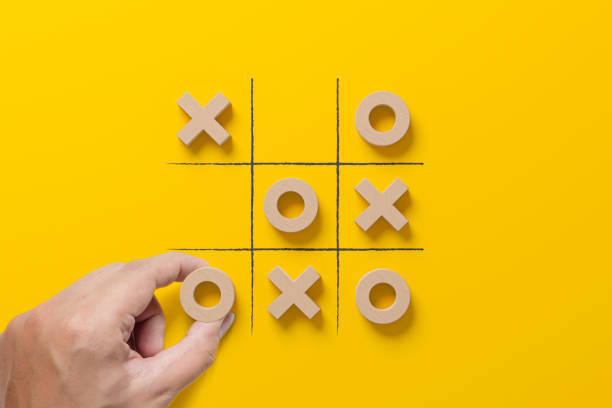Psychology of Playing Tic Tac Toe: Mind Games on a Mini Board
Tic Tac Toe, a game known to nearly everyone, is often seen as a simple pastime. But beneath its three-by-three surface lies a fascinating psychological experiment. From decision-making to risk assessment and emotional response, Tic Tac Toe encapsulates human behavior in miniature form.

1. Pattern Recognition and Predictive Thinking
Humans excel at identifying patterns. In Tic Tac Toe, our brains automatically seek familiar layouts-three-in-a-row possibilities, potential forks, and traps. Players often anticipate not just what move is logical, but what the opponent is likely to do based on prior experiences. This cognitive ability is closely tied to survival instincts and strategic forecasting.
"We see not only with our eyes, but with our expectations."
2. The Center Square: Psychological Territory
The center square is not only statistically the strongest move but also psychologically appealing. It symbolizes control, balance, and dominance. Occupying the center often gives players a sense of superiority or early advantage, reinforcing assertive behavior. This echoes real-world behavior where people compete for central positions-whether in conversations, leadership, or seating.
3. The Illusion of Complexity
Despite its limited state space, players often approach Tic Tac Toe as if each game is dramatically different. This is due to cognitive load: even simple decisions can overwhelm our working memory when layered with emotional stakes, second-guessing, or pressure.
4. Overthinking: Paralysis by Analysis
While some players move instinctively, others spiral into overthinking, imagining nonexistent traps or overly complex plans. This behavior mimics what's known in behavioral economics as decision paralysis-where too many options or fear of failure impedes rational action.

5. Fear of Loss Over Hope of Gain
According to Nobel Prize-winning research by Daniel Kahneman and Amos Tversky, people are more motivated to avoid losses than to seek gains. In Tic Tac Toe, this manifests as defensive play: players block threats before they plan their own victory. This behavior mirrors risk-averse strategies in finance, relationships, and daily life.
6. The Psychology of Mirroring
Many players subconsciously mirror their opponent's strategies-a phenomenon called social mirroring. If the opponent picks a corner, the player might feel compelled to pick a corner too. This creates symmetrical patterns, even when asymmetry would be more effective.
7. Play Behavior in Children vs. Adults
Children often exhibit randomness, curiosity, and experimentation. Adults, shaped by experience, lean toward structure and logic. Comparing how different age groups play Tic Tac Toe reveals cognitive development stages. Young children focus on immediate reward (winning quickly), while older players develop delayed gratification strategies.
8. Tic Tac Toe in Education and Therapy
Educators use the game to teach basic strategy, probability, and fairness. Therapists use it to study non-verbal cues, competitiveness, or collaboration styles. It's also used to teach AI and robotics in schools, as the Minimax algorithm can be visualized effectively through this game.
9. Emotional Impact of Loss
Surprisingly, losing at Tic Tac Toe often feels disproportionately frustrating. Because the game is so simple, a loss may feel like a failure in intelligence rather than luck. This emotional reaction can be analyzed to understand how people respond to perceived inadequacy or shame-even in trivial situations.
10. Decision Fatigue and Quick Games
Tic Tac Toe might only last a minute, but when played repeatedly, players exhibit signs of decision fatigue. Accuracy drops, speed increases, and riskier decisions are made. This mirrors how prolonged decision-making affects daily life—leading to shortcuts or irrational actions.
11. Heuristics in Play
Players use mental shortcuts or "rules of thumb"-called heuristics. For example: "Always take the center," or "Block before you build." These reduce cognitive effort but also make players predictable, which a skilled opponent can exploit.
12. The Role of Ego and Self-Worth
People often attach their self-esteem to performance, even in basic games. A win inflates ego; a loss feels personal. In group settings, some players intentionally lose or play carelessly to avoid being judged. This dynamic showcases performance anxiety and ego defense mechanisms.

13. Gender and Competitive Tendencies
Studies suggest that men and women may exhibit different competitive behaviors in low-stakes games. Men often play more aggressively, while women may prioritize social harmony or collaborative outcomes. Tic Tac Toe becomes a lens to explore gender-based psychology in competition.
14. Applying Game Psychology to Real Life
The micro-decisions in Tic Tac Toe reflect broader behavior in life. Strategic planning, fear-based reactions, the urge to win, or the discomfort of ambiguity-all surface in everyday life choices: choosing jobs, resolving conflicts, or setting goals. Understanding your play style offers insight into how you think, act, and react beyond the board.
Conclusion: Small Game, Big Mind
Tic Tac Toe may be simple, but its lessons are profound. The psychology behind each move reveals instincts, biases, emotions, and cognition. Whether you're a child learning strategy or an adult reflecting on decision-making, this timeless game serves as a compact reflection of the human mind. So the next time you draw a grid, ask yourself: Are you playing for the win, or are you uncovering something deeper about yourself?
Back to Game